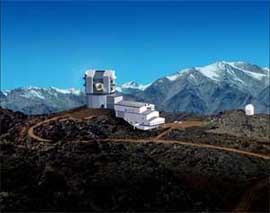The informatics revolution in astronomy and astrophysics
|
Astrophysics is now undergoing a dramatic and very rapid change, driven by a revolution in telescope and detector technology, computing power, and cyber-infrastructure, mirroring similar transformations in the biomedical sciences.The size and complexity of astronomical data and computational simulations becoming available necessitates new modes of interdisciplinary collaboration and will require a new breed of scientists with training and skills at the interface of astronomy, physics, computer science, statistics, and information science: astro-informatics.
At the same time, the nation's long-held position of leadership in science and engineering—and specifically in the areas key to astro-informatics—is being challenged like never before due both to increased global competition and to ongoing shortfalls in the nation's production of native-born scientists and engineers, particularly women and minorities.
"The future strength of the US science and engineering (S&E) workforce is imperiled by two long-term trends:
• Global competition for S&E talent is intensifying, such that the United States may not be able to rely on the international S&E labor market to fill unmet skill needs;
• The number of native-born S&E graduates entering the workforce is likely to decline unless the Nation intervenes to improve success in educating S&E students from all demographic groups, especially those that have been underrepresented in S&E careers."The Science and Engineering Workforce: Realizing America's Potential, National Science Board (2003) and Astro2020: Pathways to Discovery in Astronomy & Astrophysics for the 2020s, National Academy of Sciences (2021)
Leadership through diversity in astro-informatics
Vanderbilt has committed to develop a cutting-edge program of research in astrophysics and to distinguish itself nationally as the leading producer of PhDs to minorities in physics and astronomy. The Vanderbilt Initiative in Data-Intensive Astrophysics (VIDA) was established to be unique in the United States by virtue of its dual focus on scientific questions enabled by the informatics-driven revolution in astrophysics and on becoming the national leader in the training of students of color in physics and astronomy.
|
VIDA is envisioned as a broad effort to leverage Vanderbilt's investments in new faculty, in research telescopes, in large data-intensive collaborations, and in high-performance computing toward the mutual goals of discovery and diversity in astronomy and astrophysics. Our aims are to lead fundamental research and to train diverse cohorts of graduate students in the use of telescopes and high-performance computing to address a broad array of astrophysical problems. Our vision is of a next generation of interdisciplinary scientists who have both the scientific and the cultural savoir-faire to function effectively in large and broadly based international collaborations to tackle an ever-growing range of data-intensive problems in physics and astronomy.
Purpose
- To provide the intellectual atmosphere to develop a world-class program of research and training in astrophysics; to foster interactions among Vanderbilt’s astronomers, physicists, and informaticists; and to cross-fertilize new ideas and approaches, leading to interdisciplinary collaborations for large-scale international research projects in astronomy, astrophysics, and cosmology.
- To provide a stable base of funding for operation of Vanderbilt’s small research telescopes and to enable partnership and participation in large, data-intensive projects that advance the Initiative.
- To provide the infrastructure necessary to carry out meaningful and significant research in these areas, in the form of telescopes, high-performance computing facilities, and personnel, including postdoctoral associates, research staff, and graduate students.
- To make Vanderbilt the national leader in the training of PhDs in physics and astronomy to underrepresented minorities.

